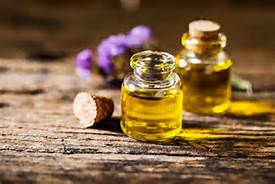BORNEOL - Dryobalanops aromantica











BORNEOL - Dryobalanops aromantica
FAMILY: Dipterocarpaceae
SYNONYMS: D.camphora, Borneo camphor, East Indian camphor, Baros camphor, Sumatra camphor, Malayan camphor.
GENERAL DESCRIPTON: The camphora tree grows to a great height, a majestic tree often over 25 meters high, with a thick trunk up to 2 metre in diameter. Borneol is a natural exudation found beneath the bark in crevices and fissures of some mature trees ( about 1 percent); young tree produce only a clear yellow liquid known as 'liquid camphor'.
DISTRIBUTION: Native to Borneo and Sumatra
OTHER SPECIES: To be distinguished from the Japanese or Formosa type of camphor; more commonly used in Europe, which is relatively toxic. See also botanical Classification section.
HERBAL/FOLK TRADITION: Borneol has long been regarded as a panacea by many Eastern civilizations, especially in ancient Persia, India and China. It was used as a powerful remedy against plague, and other infectious diseases, stomach and bowel complaints.
In China it was also used for embalming purposes.' It is mentioned by Marco Polo 1571 who called it the "balsam of disease". It is valued for ceremonial purposes for funeral rites. Its odour repels insects and ants, and it is therefore highly regarded as timber for the construction of buildings.
ACTIONS: Mildly analgesic antidepressant, antiseptic, antispasmodic, antiviral, carminative, rubefacient, stimulant of the adrenal cortex, tonic (cardiac and general).
EXTRACTION: The borneol is collected from the tree trunk in its crude crystalline form (the natives test each tree first by making incisions in the trunk to detect its presence) The so-called 'oil of borneol' is extracted by steam distillation of the wood.
CHARACTERISTICS: Watery white to viscous black oil depending upon the amount of camphor which it contains, with a distinctive, sassafras-like camphoraceous odour.
PRINCIPAL CONSTITUENTS: Crude is made up of mainly cl-borneol which is an alcohol, not a ketone (like Japanese camphor).The oil contains approx. 35 per cent terpenes; pinene, camphene, dipentene: 10 per cent alcohols: d-borneol, terpineol; 20 per centsesqiterpenes, and 35 per cent resin.
SAFETY DATA: Non-toxic, non-sensitizing, dermal irritant in concentration.
AROMATHERAPY/HOME USE: Skin care: Cuts, bruises, insect repellent, Circulation muscles and joints: Debility, poor circulation, rheumatism, sprains.
Respiratory system: Bronchitis, coughs.
Immune system: Colds, fever, 'flu and other infectious diseases.
Nervous system: Nervous exhaustion, stress related conditions, neuralgia.
OTHER USES: It is used to scent soap in the East in pharmaceutical and perfumery work. In China and Japan it is used for making varnish and ink; also a dilutant for artists' colours. Mainly used for ritual purposes in the East.
Reference: The Encyclopedia of Essential Oils: Julia Lawless
Articles Latest
- CARDAMON
- CARAWAY
- CANANGA
- CAMPHOR
- CALAMUS
- Calamintha-Calamintha officinalis
- CAJEPUT- Melaleuca cajeputi
- Plant Expression
- Molecular Target: Cell Membrane
- CADE Essential Oil
- CABREUVA
- The Kashmiri rose oil worth millions
- Agarwood: The natural treasure worth more than gold whose heady scent is driving it towards extinction
- Nonselective Binding to Proteins: The Science of Advanced Aromatherapy
- Molecular Target: DNA, RNA, and Gene Expression
- BUCHU - Agothosma betulina
- BROOM - SPANISH - spartium junceum
- BORONiA - Boronia megastigma
- BORNEOL - Dryobalanops aromantica
- Boldo Leaf - Peumus boldus
- Birch White-Betula Alba
Articles-Most Read
- Home
- Balsam Canadian - Abies balsamea
- Copaiba Essential Oil
- Balsam Peru
- Basil French - Ocimum basilicum
- North America: Tea Tree and Monarda-3
- Basil Exotic
- North America: Tea Tree and Monarda-2
- Exploring Transcultural Constants
- Thyme Essential Oil
- Balsam Tolu
- Palma Rosa
- The Bioactivity of Essential Oils
- Benzoin - Styrax benzoin
- Why Pharmacology Cannot Demonstrate Essential Oil Efficacy
- Bay - West Indian - Pimenta racemosa
- Exploring Essential Oil Activity The Conventional Way
- Aromatherapy: An Answer
- Complex information From Plants
- Contacts
